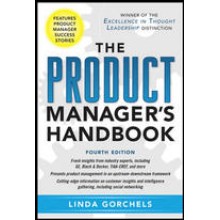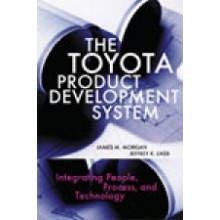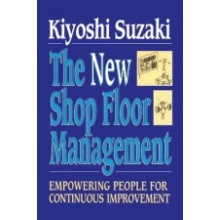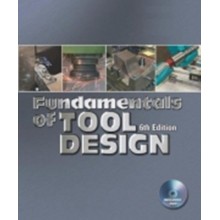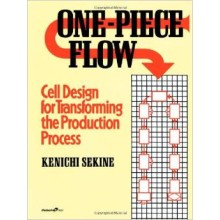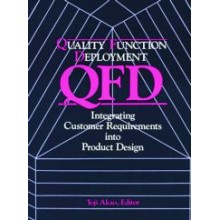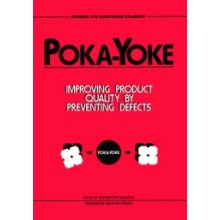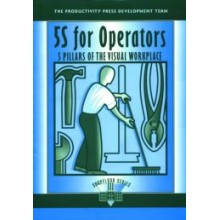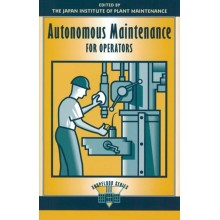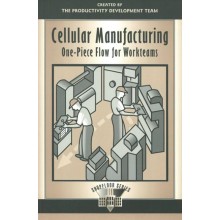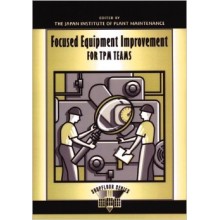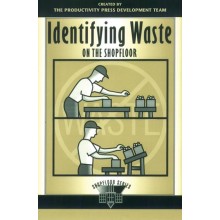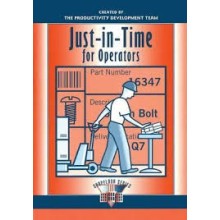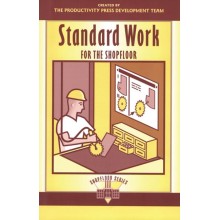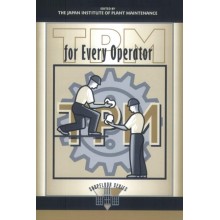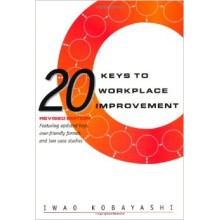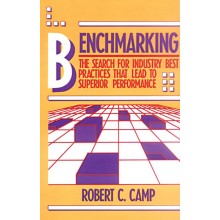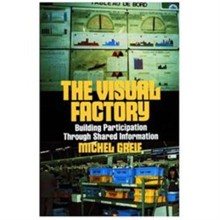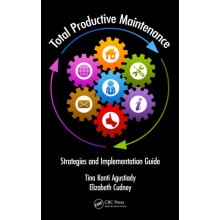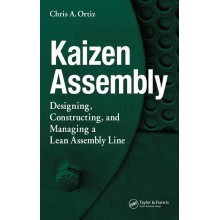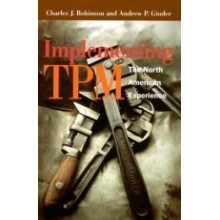Your shopping cart is empty!
Welcome visitor you can login or create an account
Autonomous Maintenance in Seven Steps : Implementing TPM on the Shop Floor
Publisher: PRODUCTIVITY PRESS
ISBN: 9781563272196
Author: Fumio Gotoh, Masaji Tajiri
Dispatch Time: 2 - 3 Days
ISBN: 9781563272196
Author: Fumio Gotoh, Masaji Tajiri
Dispatch Time: 2 - 3 Days
Our Price: Rs.4595.00
Quantity:
-
Add to Compare
Autonomous maintenance is an especially important pillar of Total Productive Maintenance (TPM) because it enlists the intelligence and skills of the people who are most familiar with factory machines-- equipment operators. Operators learn the maintenance skills they need to know through a seven-step autonomous maintenance program. Most companies in the West stop after implementing the first few steps and never realize the full benefits of autonomous maintenance. This book contains comprehensive coverage of all seven steps --not just the first three or four.
By treating machines as partners and taking responsibility for them, you get machines that you can rely on and help maintain an energized and responsive workplace. Autonomous Maintenance in Seven Steps is an essential sourcebook and implementation support for companies that are serious about taking autonomous maintenance beyond more cleaning programs.
The book:
* Includes an overview of autonomous maintenance features and checklists for step audits to certify team achievement at each AM step
* Features a detailed chapter for each step of AM
* Covers TPM basics such as the six big losses, overall equipment effectiveness (OEE), and six major TPM activities
* Outlines a TPM implementation plan
* Describes five countermeasures for achieving zero breakdowns
* Shows why companies must develop shopfloor workers into "knowledge operators" through AM activities
* Gives useful guidelines and numerous case studies in applying AM to manual work such a assembly, inspection, and material handling
* Integrates examples from Toyota, Asahi Glass, Bridgestone, Hitachi, and other top companies
TABLE OF CONTENTS
Chapter 1. TPM Aims at the Elimination of Losses
1.1 The Shopfloor Suffers from Diverse Mistakes
1.2 The Shopfloor Is Flooded with Losses
1.3 Understanding the Nature of Losses
1.4 Why Losses Occur
1.1 The Shopfloor Suffers from Diverse Mistakes
1.2 The Shopfloor Is Flooded with Losses
1.3 Understanding the Nature of Losses
1.4 Why Losses Occur
Chapter 2. Summary of TPM
2.1 Six Major TPM Activities
2.2 The Effects and an Evaluation of TPM
2.3 The TPM Master Plan
2.4 The TPM Steering Organization
2.1 Six Major TPM Activities
2.2 The Effects and an Evaluation of TPM
2.3 The TPM Master Plan
2.4 The TPM Steering Organization
Chapter 3. The Five Countermeasures to Achieve Zero Breakdowns
3.1 The Basic Strategy to Attain Zero Breakdowns
3.2 Who Takes the Five Countermeasures?
3.3 Restructuring the Roles of the Production and Maintenance Departments
3.4 Allocating Roles to the Production and maintenance Departments
3.1 The Basic Strategy to Attain Zero Breakdowns
3.2 Who Takes the Five Countermeasures?
3.3 Restructuring the Roles of the Production and Maintenance Departments
3.4 Allocating Roles to the Production and maintenance Departments
Chapter 4. The Autonomous Maintenance Program
4.1 The Aims of Autonomous Maintenance
4.2 The Autonomous Maintenance Development Program
4.3 The Step-by-Step Development of Autonomous Maintenance
4.4 Work Procedures and Standards
4.5 Educational Systems in Autonomous Maintenance
4.6 Notes for Successful TPM Implementation
4.7 The Twelve Keypoints of Autonomous Maintenance
4.1 The Aims of Autonomous Maintenance
4.2 The Autonomous Maintenance Development Program
4.3 The Step-by-Step Development of Autonomous Maintenance
4.4 Work Procedures and Standards
4.5 Educational Systems in Autonomous Maintenance
4.6 Notes for Successful TPM Implementation
4.7 The Twelve Keypoints of Autonomous Maintenance
Chapter 5. Step 1: Initial Cleaning
5.1 Aims from the Equipment Perspective
5.2 Aims from the Human Perspective
5.3 How to Develop Step 1
5.4 How to Proceed with Initial Cleaning
5.5 Case Study
5.6 The Keypoints of an Autonomous Maintenance Audit
5.1 Aims from the Equipment Perspective
5.2 Aims from the Human Perspective
5.3 How to Develop Step 1
5.4 How to Proceed with Initial Cleaning
5.5 Case Study
5.6 The Keypoints of an Autonomous Maintenance Audit
Chapter 6. Step 2:Countermeasures to Sources of Contamination
6.1 Aims from the Equipment Perspective
6.2 Aims from the Human Perspective
6.3 Time Targets for Cleaning and Tentative Standards
6.4 How to Develop Step 2
6.5 Case Study
6.6 The Keypoints of an Autonomous Maintenance Audit
6.1 Aims from the Equipment Perspective
6.2 Aims from the Human Perspective
6.3 Time Targets for Cleaning and Tentative Standards
6.4 How to Develop Step 2
6.5 Case Study
6.6 The Keypoints of an Autonomous Maintenance Audit
Chapter 7. Step 3: Cleaning and Lubricating Standards
7.1 Aims from the Equipment Perspective
7.2 Aims from the Human perspective
7.3 How to Develop Step 3
7.4 Establish a Lubrication Control System
7.5 Case Study
7.6 The Keypoints of an Autonomous Maintenance Audit
7.7 Review the First Stage of the Autonomous Maintenance Program
7.1 Aims from the Equipment Perspective
7.2 Aims from the Human perspective
7.3 How to Develop Step 3
7.4 Establish a Lubrication Control System
7.5 Case Study
7.6 The Keypoints of an Autonomous Maintenance Audit
7.7 Review the First Stage of the Autonomous Maintenance Program
Chapter 8. Step 4: Overall Inspection
8.1 Aims from the Equipment Perspective
8.2 Aims from the Human Perspective
8.3 The necessity of Overall Inspection
8.4 How to Develop an Overall inspection
8.5 Case Study
8.6 The Keypoints of an Autonomous Maintenance Audit
8.1 Aims from the Equipment Perspective
8.2 Aims from the Human Perspective
8.3 The necessity of Overall Inspection
8.4 How to Develop an Overall inspection
8.5 Case Study
8.6 The Keypoints of an Autonomous Maintenance Audit
Chapter 9. Step 5: Autonomous Maintenance Standards
9.1 Aims from the Equipment Perspective
9.2 Aims from the Human Perspective
9.3 Finishing the Activities Relating to Equipment
9.4 How to Develop Step 5
9.5 Routine inspection by autonomous Maintenance
9.6 Preparing Autonomous Maintenance Standards
9.7 Case Study
9.8 The Keypoints of an Autonomous Maintenance Audit
9.1 Aims from the Equipment Perspective
9.2 Aims from the Human Perspective
9.3 Finishing the Activities Relating to Equipment
9.4 How to Develop Step 5
9.5 Routine inspection by autonomous Maintenance
9.6 Preparing Autonomous Maintenance Standards
9.7 Case Study
9.8 The Keypoints of an Autonomous Maintenance Audit
Chapter 10. Step 6: Process Quality Assurance
10.1 Aims from the Equipment Perspective
10.2 Aims from the Human Perspective
10.3 The Challenge of Zero Defects
10.4 A Prerequisite for Process Quality Assurance
10.5 Step 6-1: Remedies Focused on Quality Results
10.6 Step 6-2: Remedies Focused on Quality Causes
10.1 Aims from the Equipment Perspective
10.2 Aims from the Human Perspective
10.3 The Challenge of Zero Defects
10.4 A Prerequisite for Process Quality Assurance
10.5 Step 6-1: Remedies Focused on Quality Results
10.6 Step 6-2: Remedies Focused on Quality Causes
Chapter 11. Step 7: Autonomous Supervision
11.1 TPM Fully Established of the Shopfloor
11.2 Maintaining the Current TPM Level
11.3 Aiming at a Higher Level of TPM
11.1 TPM Fully Established of the Shopfloor
11.2 Maintaining the Current TPM Level
11.3 Aiming at a Higher Level of TPM
Chapter 12. Autonomous Maintenance Manual Work Department
12.1 The Basis Concepts of Autonomous Maintenance
12.2 How to Develop Autonomous Maintenance
12.3 How to Construct the Seven-Step Programs
12.4 Autonomous Maintenance in the Assembly Department
12.5 Autonomous Maintenance in the Inspection Department
12.6 Autonomous Maintenance in the Material Handling Department
Glossary
Bibliography
Index
12.1 The Basis Concepts of Autonomous Maintenance
12.2 How to Develop Autonomous Maintenance
12.3 How to Construct the Seven-Step Programs
12.4 Autonomous Maintenance in the Assembly Department
12.5 Autonomous Maintenance in the Inspection Department
12.6 Autonomous Maintenance in the Material Handling Department
Glossary
Bibliography
Index
Write a review
Your Name:Your Review: Note: HTML is not translated!
Rating: Bad Good
Enter the code in the box below:
Price subject to change without notice
Copyright © 2014 Engineering Standards Bureau. All Rights Reserved.
Developed By Zoom Into Web
Copyright © 2014 Engineering Standards Bureau. All Rights Reserved.
Developed By Zoom Into Web




